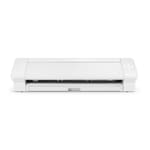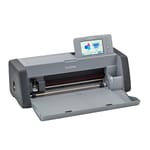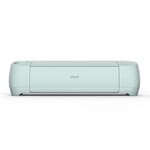When one (unspecified) member of the All3DP Editorial department joined his new school at just 7 years of age, his new teacher, Mrs. Dart, scolded him for his inability to use a pair of scissors. As if being the new kid wasn’t bad enough, the helpless student was singled out and forced to pointlessly cut paper while his classmates got on with learning important stuff. Like math, and bullying people with better hair colors.
Well, who’s laughing now, Darty? Two and half decades on, your antiquated snippers are irrelevant and that anonymous member of the Editorial team is now about to review the elaborate, scissor-replacing Cricut Maker 3.
The Maker 3 is a digital cutting machine for over 300 materials including paper, fabric, and vinyl that has huge popularity with makers. This gorgeous gadget should make a mockery of Dart’s bizarre scissor-based curriculum, as it follows computer code to cut intricate shapes with the kind of precision a pair of hands could only dream of.
Join us then as we stick it to our old teacher and get to grips with the $400 Cricut, its software, vinyl, the delicate touch needed for weeding and transferring, and also commandeer half the office’s supply of beer.
The Verdict

Pros
- Superb product design
- Easy to use
- Can iterate designs quickly
Cons
- Costs can add up quick
- Design Space software disappointing
- More purchases required to work with advertised 300 materials
The Cricut Maker 3 is an excellent digital cutting machine, a polished product that has a premium feel and the potential to work on a wide variety of materials. It’s also easy to use, requires no previous skill or knowledge to work, and has a large community of makers who contribute to ideas and methods for the creation of new items and projects. It’s fun to use this machine, and if you know what you’re doing, it doesn’t take long to go from idea to finished item.
Perfect, it is not, though. The Design Space software is basic and is best used solely as the controller for the Maker 3. Cricut has signaled its desire to improve it, so it might get better in future, but for now, it’s not complex enough to design intricate or quality items in-app. Instead, it serves heavily as Cricut’s storefront, pushing extra items and subscription options towards you at any opportunity, which can wear thin after a while.
This is a Cricut theme, unfortunately. There’s a seemingly unending number of materials and accessories to buy for this machine, and if you go all-in to use the full range of 300 materials and techniques, then the $400 price tag will rapidly increase. You don’t need to, though, so if you know what you want to do and what you need it to do, you can pick and choose your accessories.
It’ll serve you well, the Maker 3. We just wish its expansive capabilities were less expensive to unlock. Still, if you want to cut a wide variety of materials precisely, it’s an easy recommendation. You’ll never need scissors again. Maybe.

The Tech
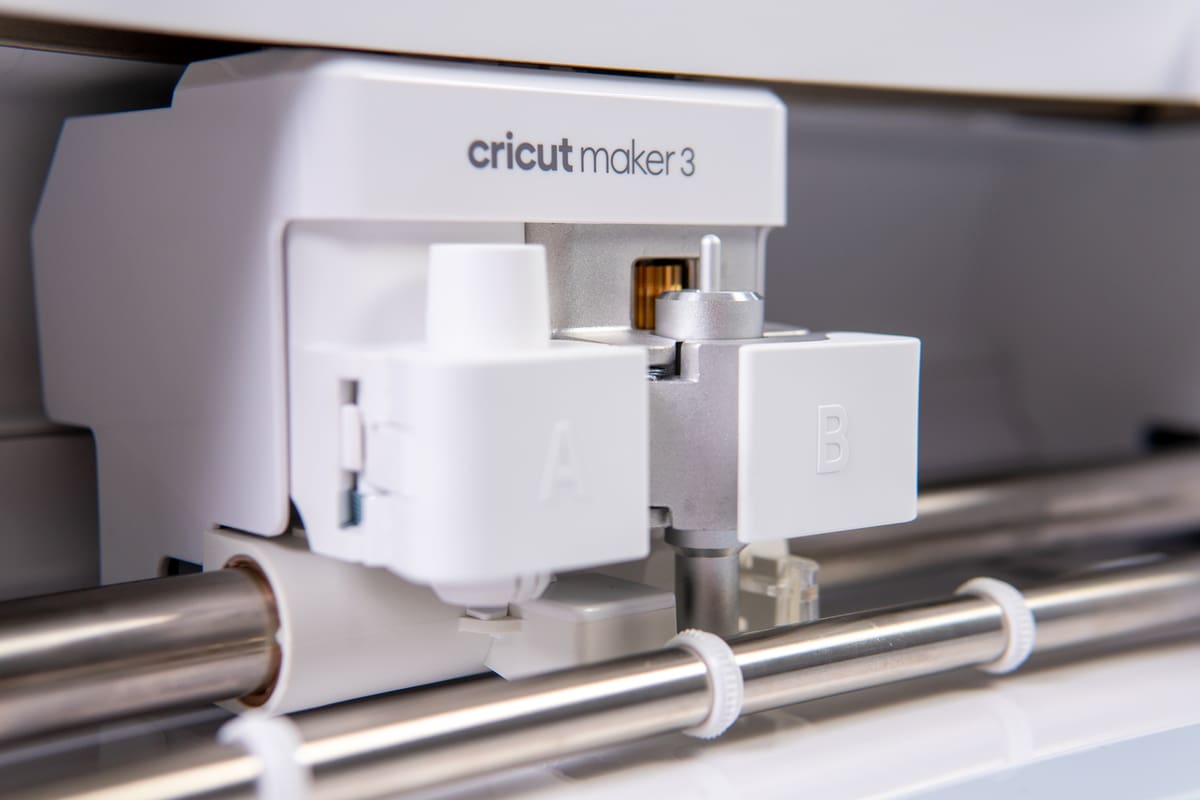
Cricut has become perhaps the most visible brand offering the machines we know as electronic cutting machines. (You may also see them called die cutting machines, plotting cutters, or even crafting machines.) This sleek little device is nowhere near as rough and utilitarian as the budget 3D printers we typically look at. It’s clean, stylish, and, dare we say it? Yeah, go on; it’s a little Apple-y.
The Cricut Maker 3 was introduced in the late spring of 2021 and, despite being called the Maker 3, is actually the second Maker machine, succeeding the original that first hit the shelves in 2017. Mechanically speaking, it can cut quicker and has 10 times the cutting force of its predecessor, says Cricut.
The Cricut Maker 3 is a CNC machine, following computer-generated code to cut out very precise and delicate shapes in more or less exactly the same way a CNC router does, just with a blade instead. Its work area is 330 x 3,600 mm, but to reach the maximum cutting length, you need the optional roll holder ($50) and use Cricut’s “smart” materials, which don’t need a cutting mat. If you use third-party materials (which will require a cutting mat), you’re limited to the length of the said cutting mat.
The Maker 3 is more delicate than a loud and rowdy CNC router but is probably more versatile, too. Cricut proudly shouts about how the Maker 3 can work with more than 300 different materials, but there is a catch – you’ll need many of the Maker 3’s 13 additional tool heads to process them. That’s rather important, as only one fine point blade ships with the Maker 3. Additional tool heads are purchased separately, costing up to $50 each. The flip side to that, we suppose, is that you only need to buy the tool heads you really need if you want to work with a specific material. It’s just important to note you’re not buying a machine that can work with all those materials right out the box – you’re buying the base to build upon.
Cutting isn’t the only thing on the Maker 3’s CV, it has a few more tricks up its sleeve too. Namely, drawing, scoring, debossing, and engraving. Not to mention the specific cuts enabled by some of the more exotic blade tools. Some of these acts of creativity have to be carried out by the aforementioned additional tool heads, and if you want to draw or write, you’ll need special Cricut pens. You might be starting to sense a theme here already.
The tool head provided with every Maker 3 is the fine point blade, which is compatible with a fairly large number of materials cited as cuttable with the Maker 3. Cricut (to our knowledge) doesn’t state the exact number of materials the fine point blade works with, but we’ve clocked paper, iron-on, vinyl, cardstock, foam, and even carbon fiber as compatible. If you’re looking for something specific to work with, our tip would be to check the compatible materials page and perform a “find in page” search in your browser for your desired material. That way you’ll know if you have the appropriate tool on hand.
These tools need somewhere to sit. In the Maker 3, there are slots for two tools, labeled “A” and “B”. You might be wondering why you need two slots, and we’re about to tell you – with certain projects, the Maker 3 can carry out two jobs at the same time. Let’s assume, for example, that you want to make a sticker. Well, you can cut out a shape from your material and have the Maker 3 draw a pattern or word during the same job. That’s enormously efficient as far as workflow goes, and if you’re doing a batch job of basic stickers on one of Cricut’s smart materials then you can produce a lot of them in very quick fashion.
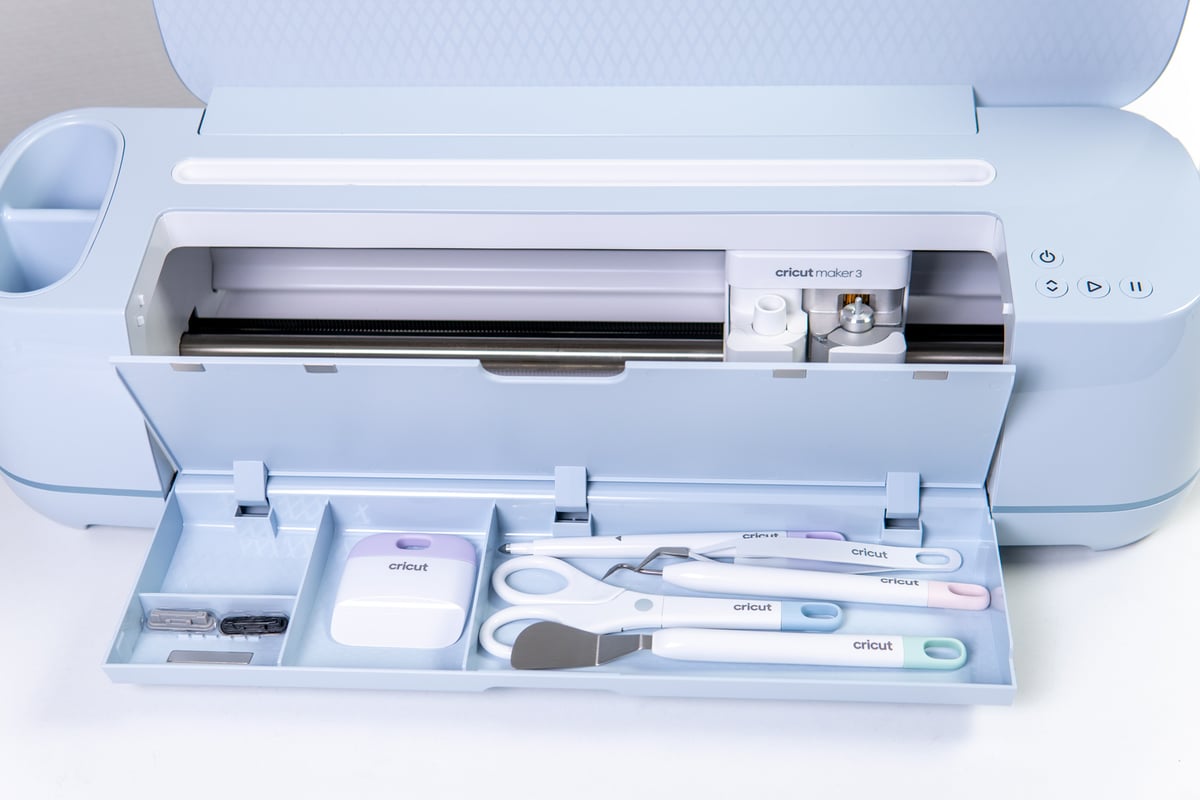
We didn’t have all the tool heads and compatible materials to hand, but we’ve got a particular material we want to focus on – vinyl. Vinyl is a material that’s best cut accurately with a dedicated cutting machine. Laser cutters might seem an option but are completely out of the question thanks to the two horrendous chemicals released by vinyl when cut by a laser – hydrochloric acid and chlorine. We want none of them, and neither should you.
We’ve been using Cricut’s proprietary smart vinyl. Presumably, it’s “smart” because the Maker 3 can process it without a cutting mat. We’ve also been cutting Cricut’s printable vinyl. This does require a cutting mat, so we experienced both sides of this workflow with the Maker 3.
Any material that isn’t a Cricut smart material will require a mat. Now, when it comes to materials, cutting mats, and pens, Cricut would much rather you used their own, but you don’t have to. A search online will present you with plenty of alternatives. Those alternatives are often more affordable, and sometimes better to work with, according to users. Even adaptors for pens like Sharpies are out there. There’s a lot of variability on the topic of materials though, and finding one that works best for you, your machine, skills, and project is a question of trial and error – a bit like finding the perfect filament for your 3D printing project.

Cutting and Usability

The Maker 3 is a product where attention to the user experience has clearly been thought of and fine-tuned. From turning the machine on to removing completed work, it’s refreshing to see an attention to detail that’s often missing from the 3D printers we use day-in, day-out.
There’s no assembly process involved here; the machine ships complete and ready to run. All you have to do is plug it in. When using the Maker 3 for the first time, its software (Cricut Design Space – free download) will prompt you to carry out a tutorial with a material sample supplied in the box, and from there, you’re away. It’s simple, polished, and pretty fun too.
Design Space itself is nothing to write home about. It’s very basic design software aimed at beginners and total novices to this sort of game, including the basics for things like changing sizes and shapes, rearranging items within the space, and setting some offsets. For the most part, it serves that purpose pretty well. Options for editing are limited, so more experienced designers will undoubtedly prefer to do the bulk of the work in other software, using Design Space simply as the vehicle to begin production. It’s certainly the way to go if you want to create detailed, intricate designs.
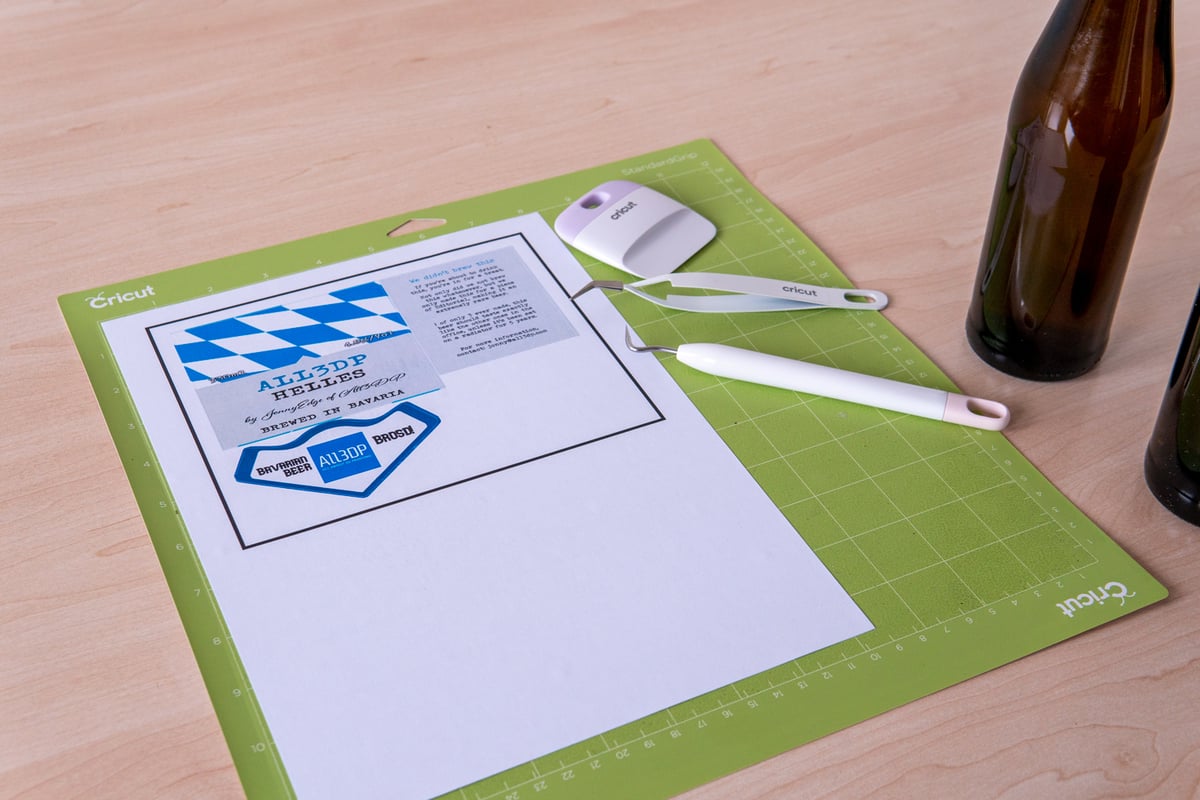
You can, should you wish to, use Design Space on your mobile device. Once logged into the app on Android or iOS, you can access all of the designs you have saved to your account and design and play with the same functions you can on the desktop version. It’s as simple as it is in desktop form but smartly presented in app form. You can also operate the machine using the app too. As long as you’re in the same room as your Maker 3, you can wirelessly connect to the Maker 3 via Bluetooth. The option to communicate with your Maker 3 on your computer via Bluetooth is also there, but it’s fiddly to set up and more hassle than using a USB cable to connect to the machine.
The software has another purpose, too: to sell you more Cricut products, designs, fonts, projects, and the like. Filtering for free options is possible though, there’s just far less for you to play with if you aren’t willing to pay or sign up for Cricut’s subscription service – Cricut Access.
Once you’ve got a design ready to go, you connect to the Maker 3 via a USB cable (those with AMD Ryzen chips in their computers should use Bluetooth instead.) Once there, the software will automatically detect the machine, and you can get down to business. Before beginning the cut you have to select the material you’re cutting, how much pressure you want for those cuts, and, if appropriate, load it onto a cutting mat. The Cricut cutting mat has a pleasantly sticky surface that grips material well, preventing it from being creased up in the cutting process.
Inserting the material (with mat, if not using Cricut’s smart materials) is about as easy as turning the machine on. Just line up your material and press the feed button to load (or unload) it. From there, the Cricut measures what it has within it and, if you’re carrying out a “print and cut” job, even scans the print to establish borders before sinking its blade into the material. In testing, we saw slight variations with the cuts, by a millimeter here and there but nothing substantial.
The print and cut method was something we had a particular interest in. We had a thoroughly good time customizing beer labels to replace those found on the office’s supply with something a little more…us. All it took was a few measurements, a little practice with the Cricut’s vinyl cutting capabilities, and – the trickiest bit – weeding and transferring. Weeding is removing the excess material, taking out the bits you don’t need so you can peel off the vinyl and apply it without mess via transfer tape.

Weeding is trickier than it looks and is not the friend of unsteady hands. It’s better here to be patient and cautious and make sure the Maker 3 is cutting deep enough to make the removal of unwanted parts easier. On-the-fly adjustments like this, before the cut, are possible in Design Space.
The hand tools provided by Cricut to assist with cleaning and transferring cut materials are pretty good. The tweezers and the weeder were solid assistants; we only fell short with the transfer tape part, which is entirely on our technique.
With more time and practice, we’d crack it, and so will you, but be prepared for some frustrating first few hours if you’re new to working with vinyl. By the end of our time with the Maker 3, we had around ten bottles of beer “prototypes” stacked up on our desk, prompting concerned glances from our superiors. Some looked better than others, but it was worth it. The final labels look rather good, in our opinion, and once we knew what we were doing, it was incredibly easy to iterate forward to better-looking results.
Should we find ourselves commissioned to customize some drinks for a show, we’re confident we could tackle it with the Maker 3 – quickly too.

Is it Worth it?

If you’re going to get a lot of use out of this machine and have the sense of touch required for the application of some of the materials, as well as a mind constantly flowing with creative ideas, then yes, it probably is worth it. This machine has a lot of upsides.
Let’s talk about how easy it is to create with first. You can go from designing to making in a matter of minutes, and the machine itself is well constructed and very simple to get to grips with, even if you’ve never seen one before. The Maker 3 cut very quickly and smoothly throughout our time with it, consistently producing the results we desired. What we saw on our screens was what we got after production, and this allowed us to iterate our beer bottle label designs very quickly, going from prototype to finished product in what seemed like no time at all.
The way this product is presented and designed should have a lot of 3D printer manufacturers taking notes. Credit to Cricut here; the Maker 3 is very impressive. Fun and easy to use, and capable of producing quality cuts and shapes, even more intricately than we thought. It’s also possible to iterate a design pretty quickly if you know what you’re doing – which will come with practice, of course.
However, there are some frustrations with the product too. Perhaps the biggest is Cricut’s aggressive approach to selling you extra things you may or may not need. It’s everywhere; tool heads, roll holders, materials, tools, pens, cutting mats (yes, there’s more than one), designs, shapes, and fonts in the Design Space software, and of course, a subscription service too. It’s too much, and the brand pushes very heavily, even in the software. This is a $400 machine, and as soon as you’ve handed that money over, Cricut is pursuing you for more.
The other criticism we have relates to Cricut’s Design Space software. It’s very basic and, despite being designed with beginners in mind, a little unintuitive at times – finding the filter to sort free designs or even the save button isn’t always immediately obvious. We suspect the former is by design.
Still, we’re big fans of this machine and can’t help but feel 3D printer manufacturers could learn a lot from it. It makes making fun, and that’s what it should be like, right?

Features
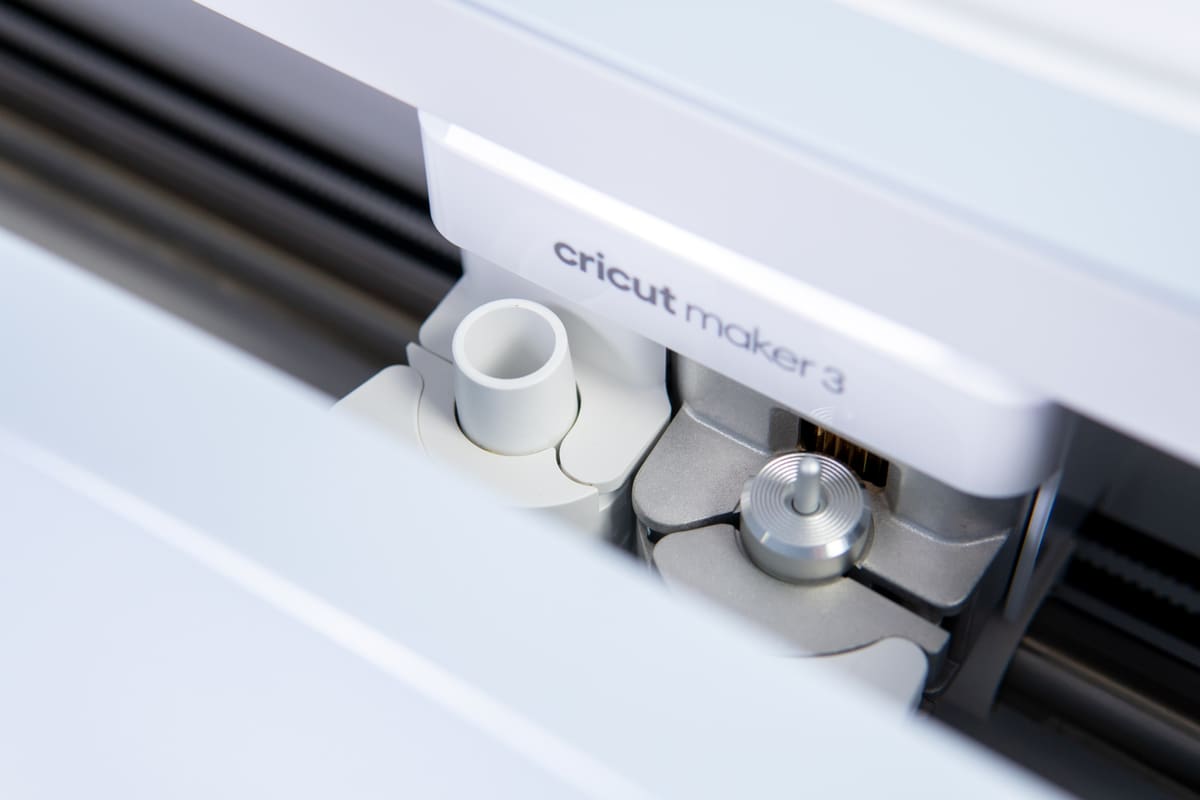
13 Tools
Primarily, the Cricut Maker 3 is a clever cutting tool for making super precise cuts in materials on the softer side of the material spectrum. However, it isn’t the only thing it can do and the Maker 3 is compatible with 13 different tools (sold separately) that allow users to do a variety of things like writing, engraving, debossing, and more.
Cricut claims its tool heads can easily be swapped thanks to a patented attachment system it calls QuickSwap. Usefully, there are two tool clamps present on the Maker 3 (labeled A and B), so you can do two different things in one job, like cutting and writing, for example.
Prices for additional tool heads tend to vary between $30 and $50 in price. We reached out to Cricut to ask if tool heads from the previous generation of machine would be compatible, and good news, they are. That should save you a bit of extra cash if you’re planning to upgrade.
300+ Materials
Cricut claims the Maker 3 can work with more than 300 materials ranging from things as soft as silk, cotton, and cashmere, all the way up to stronger materials like woods, leathers, and denim. It can also handle materials that laser cutters cannot, including vinyl.
What you can work with depends on the toolheads at your disposal. You won’t be tackling 300 materials out of the box, only if you invest in the optional toolheads – if they’re available, that is.
While on topic of materials still, Cricut has what it calls “smart” materials that you can order for the Maker 3. These include paper, vinyl, and what the company calls Iron-On. The latter allows you to use an iron to bond the material to fabric, one use example being making t-shirts. It comes in various colors and should last for more than 50 trips through the washing machine, according to Cricut.
Cricut smart materials simply feed into the machine without the need to be placed on a cutting mat. It’s with these materials that you’ll be able the higher cutting lengths advertised. You’ll probably want to purchase the optional roll holder for that too.
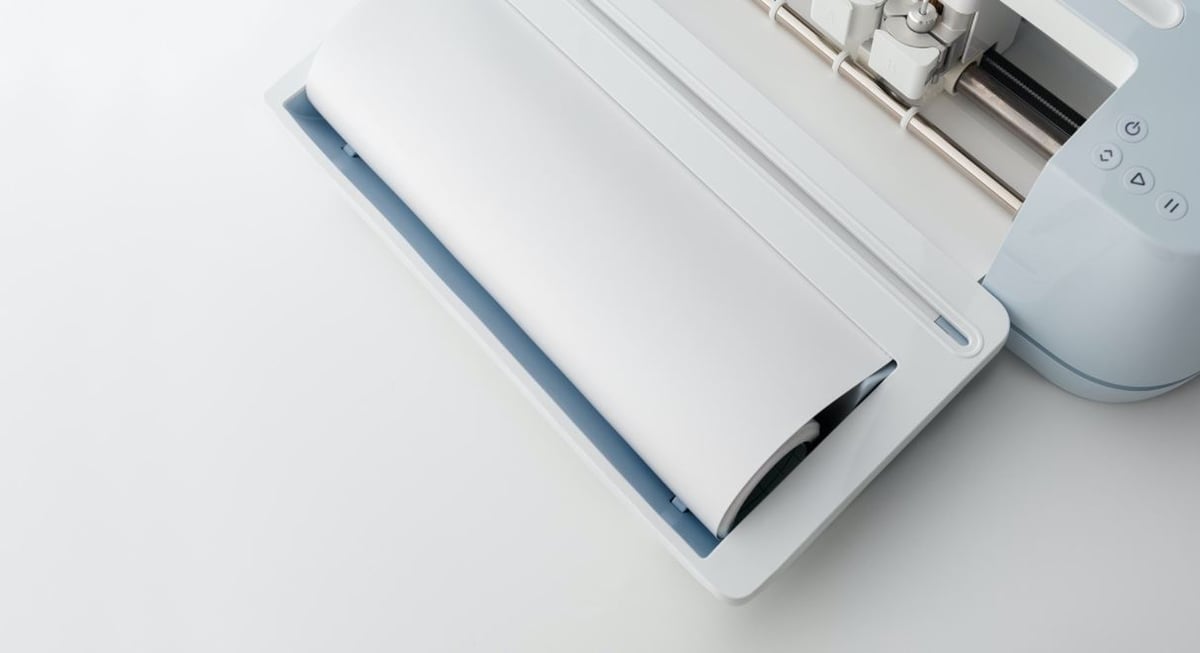
Work Area
The Maker 3 can cut materials up to 330 mm wide and 3,600 mm long. However, in order to reach that length of cut, you’ll need the optional roll holder – a $50 extra.
The roll holder, unsurprisingly, holds rolls of material, more specifically, Cricut’s own “smart” materials. Optimized for the machine, these materials range from 3-22 meters in length, though only the Smart Vinyl material is currently available in a length beyond that figure. The maximum length you can cut otherwise appears to depend on the material and what cutting mat you’re using, which you will need to use if not using the smart materials.
Free Design Software
Design Space is the name of the free software that comes with the Cricut Maker 3. The desktop version is available on both Windows and Mac, while mobile versions can be found for smartphones and tablets.
It’s in Design Space where the initial set of the Maker 3 takes place, before moving on to the design tools and access to Cricut’s library of ready-made projects. There appears to be a fairly large number of free designs and fonts available, though the software actively encourages paid items or signing up for the Cricut Access subscription program, which gives you many of them as part of your monthly or annual membership.
It is through the Design Space software that users can upload their own images and designs for the machine to produce – a key feature for many. The file formats accepted are .jpg, .png, .bmp, .gif, .svg, and .dxf. It’s really, really easy to do, and pretty quick too, and you can choose varying levels of detail for your uploaded item.
Opinion seems to be divided on how good the software is, with praise and criticism following it across app stores review sections and forums. It is at least free, however. We felt it to be far too basic to be used exclusively as design software. You’ll be better off with a dedicated piece of design software for the Cricut, and use Design Space just as the controller for the machine.
If you’re new to the software and to Cricut’s products in general, there’s the option to take one of the firm’s 101 or 102 courses over Zoom to get a handle on it.
Desktop-friendly Size & Connectivity
The Maker 3 is a pretty compact device that should fit into many people’s workshops or office spaces without much issue. It features a couple of storage areas within the machine for tools and other bits and pieces – including an undertray slot for tool heads. We really like the compact yet organized design, it’s very well thought out and doesn’t look messy at all.
Connectivity comes by way of USB and Bluetooth, and there’s a built-in docking station for tablets and smartphones, giving the whole thing a tidy look and allowing you to work with the software close to the machine. Surprise, surprise, some users have reported Bluetooth having a patchy connection (common with just about any Bluetooth tech), so we’d recommend sticking to the trusty USB cable – an exception being if you’ve an AMD Ryzen chip in your computer. If that’s the case, Cricut recommends using Bluetooth exclusively.
Cricut Access Subscription Service
Cricut offers a subscription service to go alongside the Maker 3 called Cricut Access. It’s available as a Standard or Premium subscription. The Premium subscription is only available to purchase yearly for $119.88 – you can’t pay monthly for it. However, the Standard subscription is cheaper to buy on an annual basis at $95.88, and there’s the possibility to pay monthly at $9.99.
In terms of benefits, the differences between these two are slim. The Premium subscription gives a 20% discount on materials and free economy shipping on orders over $50 in the Cricut webstore. Both subscriptions get unlimited use on over 150,000 images, more than 500 fonts, 1000’s of ready-to-make projects as well as a 10% discount on licensed images.

Tech Specs
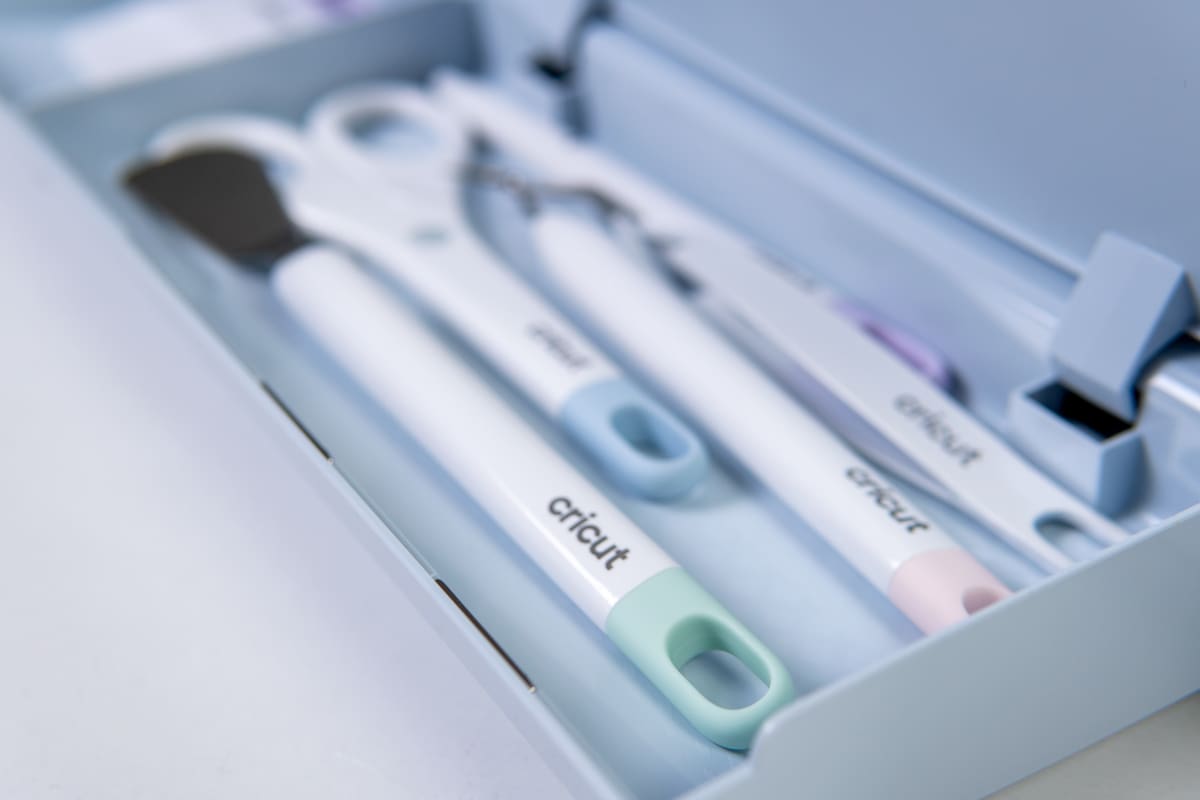
General Specifications
- Manufacturer: Cricut
- Year: 2021
Die Cutter Properties
- Max. Cutting Width: 330 mm
- Max. Cutting Length: 3,600 mm (with optional roll holder)
- Cutting Force: 4,000 g
- Maximum Thickness: 2.4 mm
- Interchangeable Tool Heads: Yes
- Compatible with Third Party Materials: Yes
Software
- Compatible Software: Cricut Design Space
- Connectivity: USB, Bluetooth
- Operating System: Windows, iOS, Android.
Dimensions and Weight
- Dimensions: 562 x 181 x 158 mm
- Weight: 7 kg

Similar Machines
There are a few alternative digital cutting machines to the Maker 3. Here’s a couple we’ve picked out that might be deserving of your attention.
Maybe this isn’t for you though, maybe you fancy something a little more laser-y. In that case, head over to our Best Laser Cutters or Best Laser Engravers buyer’s guides for the very best of pew-pew gadgets.
Silhouette Cameo Plus
The Silhouette Cameo series is often pointed to when people are looking for something other than a Cricut Maker 3. It comes in three sizes, each their own product – the 4, the Plus, and the Pro – and it’s the Plus that is the same price as the Maker 3. With users quick to praise its software and its ability to cut slightly thicker, it’s easy to see why it’s often picked as an alternative. One potential downside could be noise though, the Cameo Plus is apparently far louder than a Cricut Maker 3.
Brother ScanNCut DX
Offering a slightly different experience, the Brother ScanNCut DX has a built in scanner, meaning you can scan images you want to turn into cut designs. It has a 304 x 304 mm work area, wireless connectivity and can cut 3 mm deep. It’s also coming in at $399.99, making it the exact same price as the Cameo Plus and Cricut Maker 3.
Cricut Explore 3
Cricut’s Explore 3 could be seen as a lighter version of the Maker 3. It can work with around 100 materials instead of 300 and has just 6 different tool heads instead of the Maker 3’s 13. It also doesn’t have the same potential cutting force as the Maker 3. Understandably, given the differences, it’s cheaper at $299.99.
License: The text of "Cricut Maker 3 Review: Editor’s Pick 2022" by All3DP is licensed under a Creative Commons Attribution 4.0 International License.
CERTAIN CONTENT THAT APPEARS ON THIS SITE COMES FROM AMAZON. THIS CONTENT IS PROVIDED ‘AS IS’ AND IS SUBJECT TO CHANGE OR REMOVAL AT ANY TIME.


